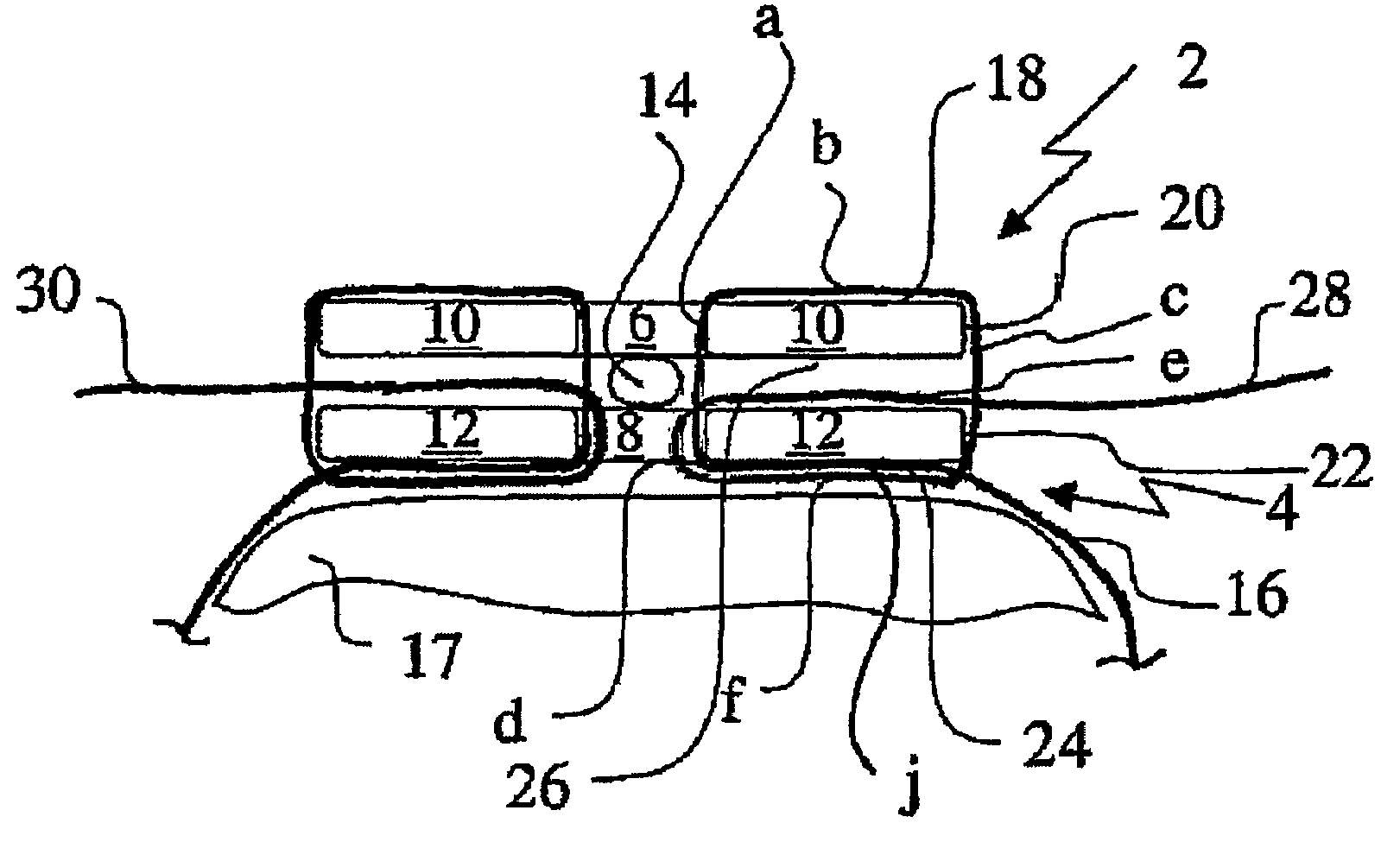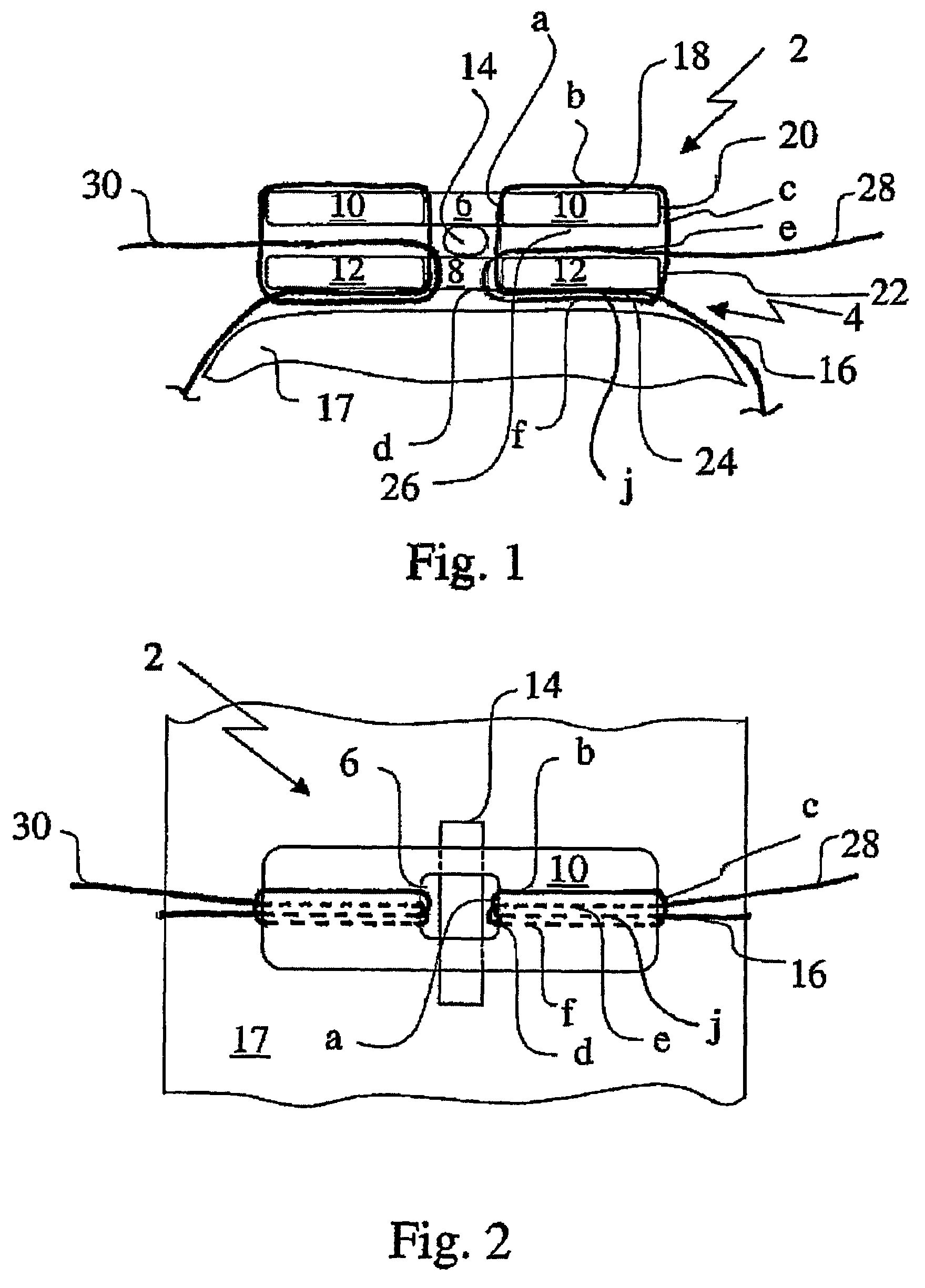Bone fixing device
a bone fixing and bone technology, applied in the field of bone fixing devices, can solve the problems of steel cable carving into the bone, risk of stitching and possible blood contact, and the difficulty of fixing by knots, clamps or other means, and achieve the effect of improving the stability and stability of the bone fixing devi
- Summary
- Abstract
- Description
- Claims
- Application Information
AI Technical Summary
Benefits of technology
Problems solved by technology
Method used
Image
Examples
Embodiment Construction
[0039]In FIG. 1 the numbers 2 and 4 denote round fixing plates having a hole 6 resp. 8 surrounded by a ring 10 resp. 12. Between the fixing plates a removable bar 14 is present, Cable 16 surrounds bone parts 17 (not fully shown). One end of cable 16 runs along the trajectory in which parts (a) to (f) are distinguished. Herein part (a) runs upward from below through the holes 8 and 6, then bends to the right in an outward direction and runs as part (b) along the upper surface 18 of the ring 10 to the outer edge thereof, where it bends downward to run as part (c) along the outer circumference 20 and 22 of the rings 10 and 12. The cable then bends to the left in an inward direction and runs as part (f) along the lower surface 24 of ring 12 to the inner edge of this ring, where it bends upward to run as part (d) through hole 8 in plate 4. Finally the cable runs as part (e) through the gap 26 in outward direction bringing end 28 out of the gap. The other end of cable 16 follows a similar...
PUM
 Login to View More
Login to View More Abstract
Description
Claims
Application Information
 Login to View More
Login to View More - R&D
- Intellectual Property
- Life Sciences
- Materials
- Tech Scout
- Unparalleled Data Quality
- Higher Quality Content
- 60% Fewer Hallucinations
Browse by: Latest US Patents, China's latest patents, Technical Efficacy Thesaurus, Application Domain, Technology Topic, Popular Technical Reports.
© 2025 PatSnap. All rights reserved.Legal|Privacy policy|Modern Slavery Act Transparency Statement|Sitemap|About US| Contact US: help@patsnap.com



